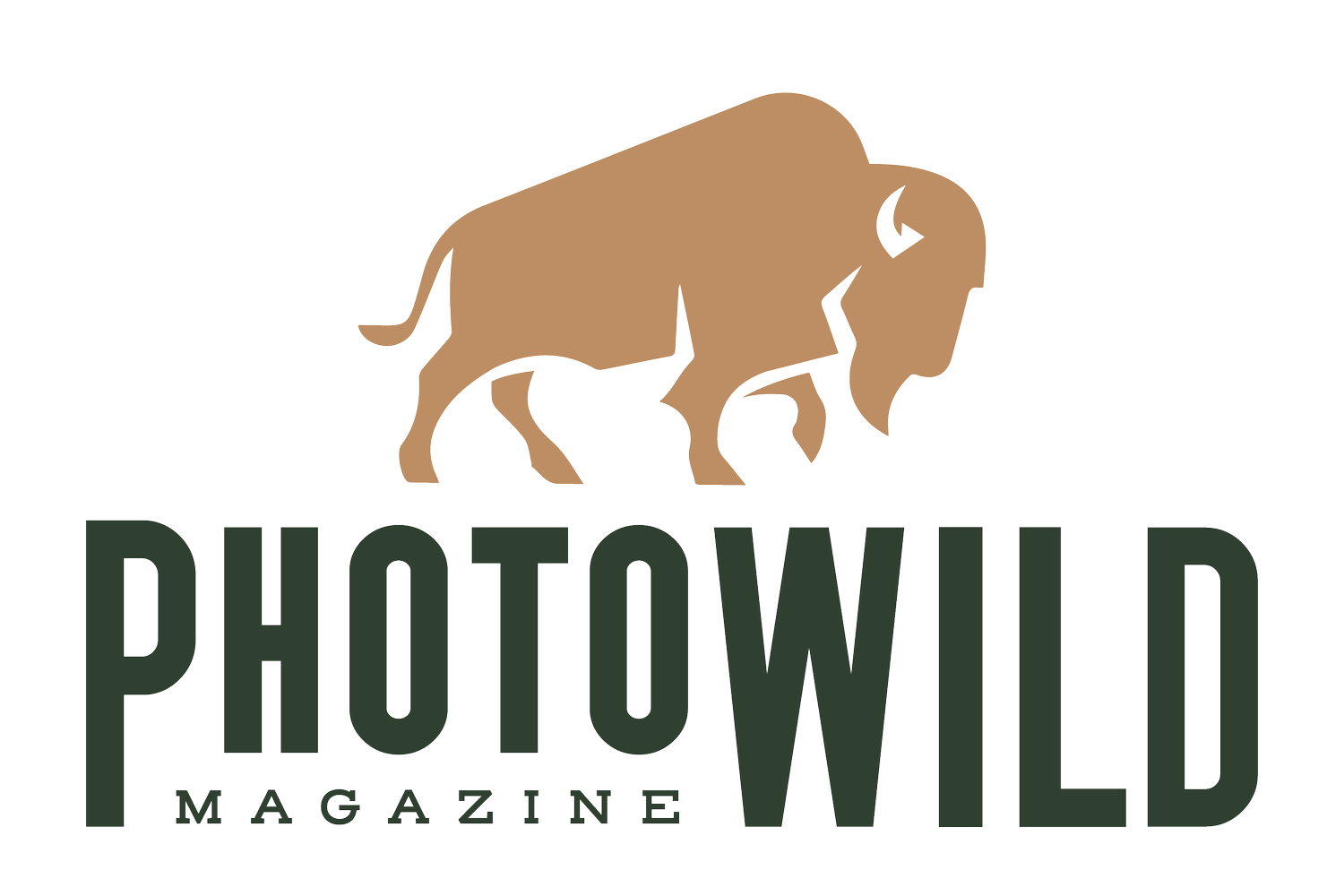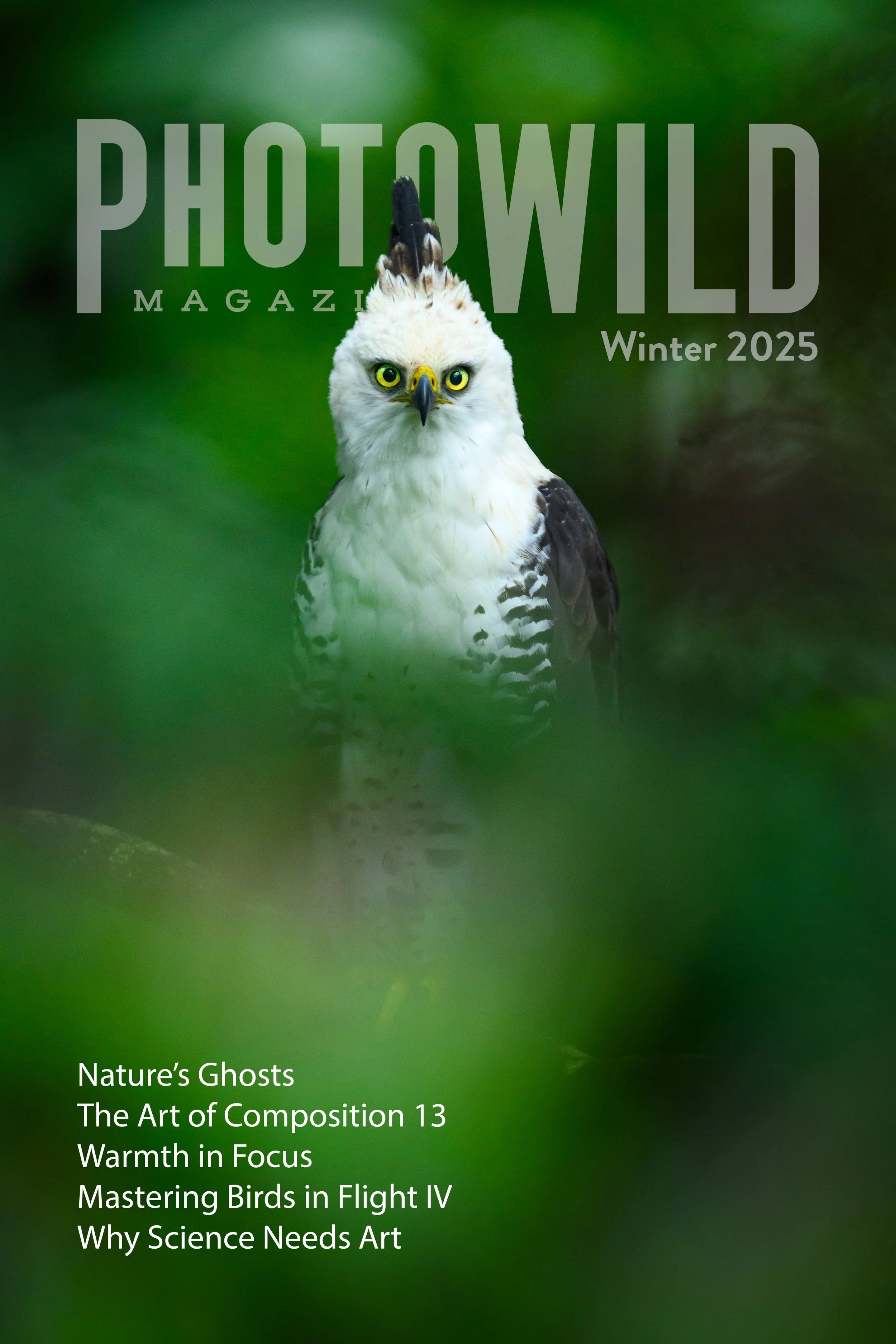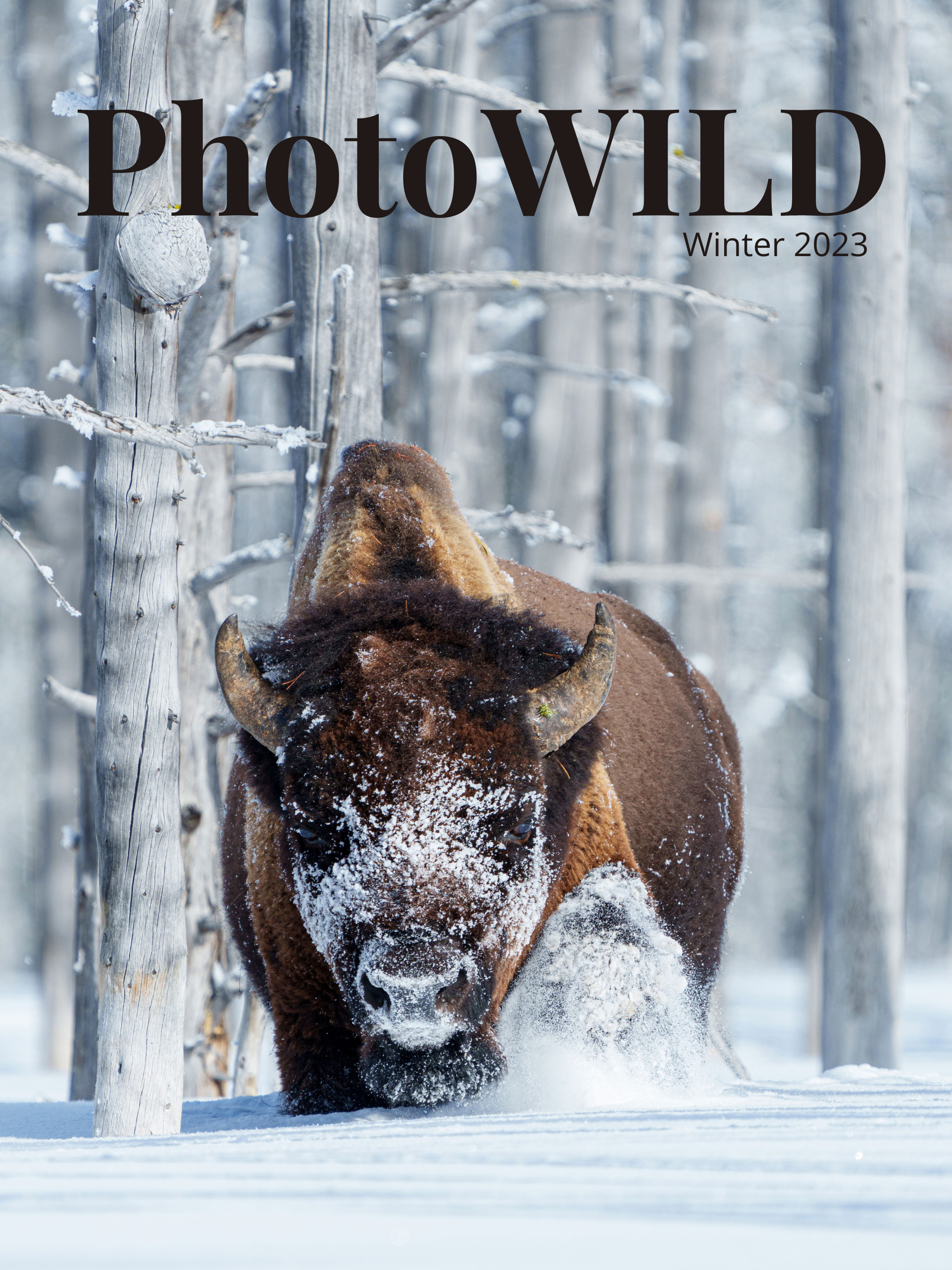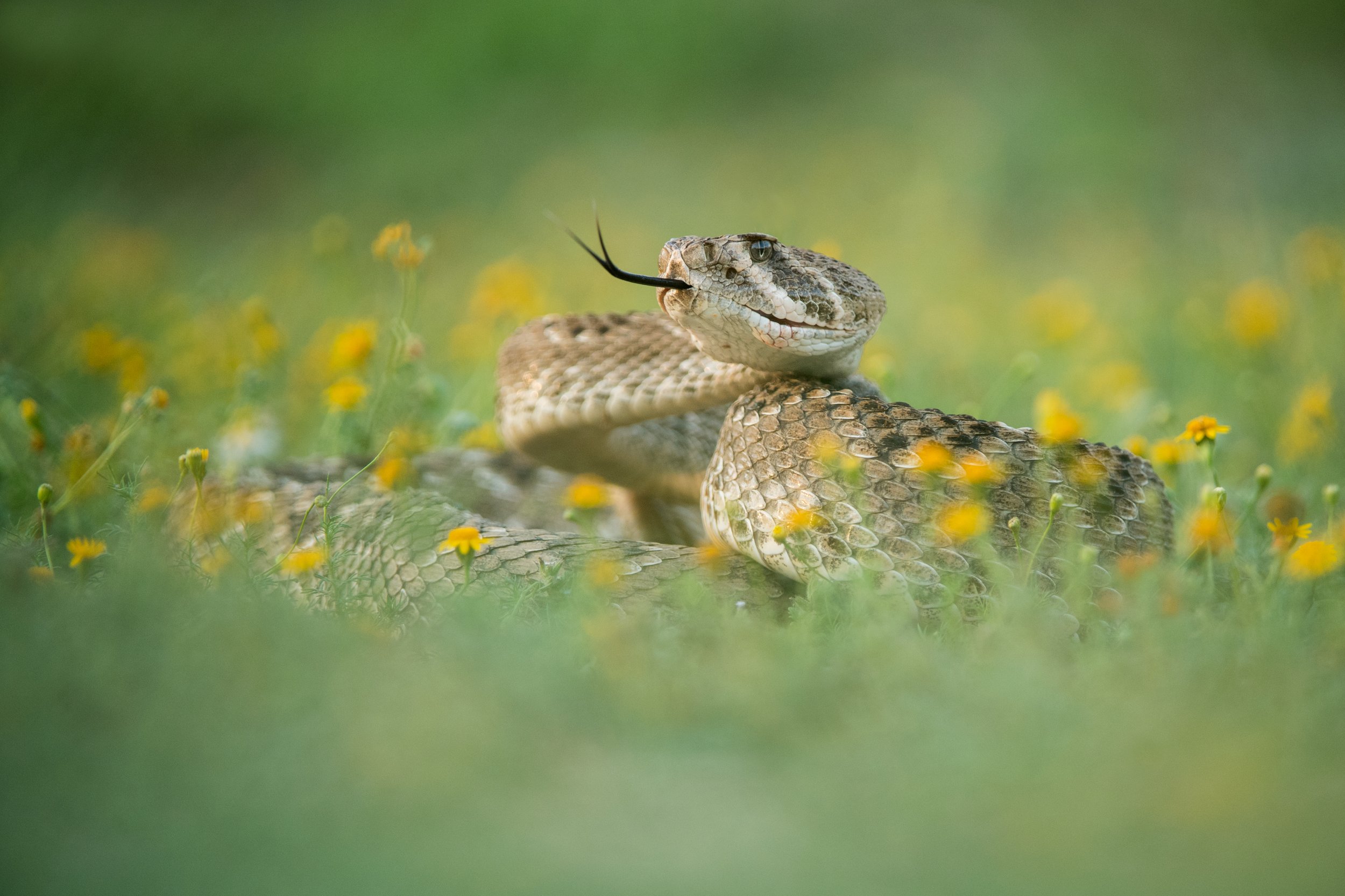Latest Members Only Articles
At the heart of it all, good art, whether that’s wildlife photography or music, is an extension of psychology. Understanding why art makes us feel something, anything, is the first step in learning how to go beyond creating snapshots as a wildlife photographer.
The angle of view we chose to compose with has a dramatic impact upon the way people perceive our subjects. Psychological studies on camera angles reveal that we, as artists, manipulate the viewers emotional response to our photographs with subtle changes in the height of our camera angle. This may very well be one of the most important and powerful choices we have has wildlife photographers.
Getting eye level with our subjects has the power to do far more for our photographs than just create a connection with our viewers. From this angle of view, it allows us to simplify the composition, work with distant and out-of-focus backgrounds, and subtly brings in foregrounds to the equation.
How we position our camera in relation to our subjects has a tremendous impact on the way that viewers experience those subjects. While we are always cautious to suggest that any sort of "rules" apply to art and compositions, there is a default position we should always start with for photographing wildlife for one very important reason: its ability to create a connection with the viewer.
From the beginning of this series on the Art of Composition, we got bogged down in discussion about depth of field. This isn’t a topic that is typically brought into the conversations about composition. Yet, I have a difficult time thinking of a better place to begin. The ability to understand how we emphasize or deemphasize all the stuff in our composition means everything. And from the previous articles, you should understand that there is so much more that goes into depth of field, and bokeh, than just f/stops.
But now it’s time to move on.
Large apertures and a shallow depth of field does more than just help us emphasize or deemphasize certain parts of the composition; in wildlife photography it emulates the way in which we respond to the very same situation in real life. Extremely shallow depths of field mirror both the physiological and psychological responses that humans have evolved for survival. Understanding this can revolutionize our photography.
Should I stick a teleconverter on my lens or just crop in Lightroom? This is a question we all face in the field at some time or another. Both are potential solutions for “getting closer.” Both come with their drawbacks. However, only one will improve your composition by creating additional bokeh and shallower depths of field.
When it comes to the sensors in our cameras, size matters. Full frame versus APS-C versus micro four thirds, each of these sensors have their benefits for different types of photography. But each also have an impact on depth of field and bokeh in our composition.
While depth of field is primarily a function of distance, the focal length of your lens also has a large impact on this as well. A 600mm f/4 lens has a shallower depth of field than a 400mm f/2.8, for instance. Depth of field, and thus the quality of bokeh, in our photographs is the accumulation of a variety of factors that have nothing to do with apertures and f/stops.
Above all else, distance is plays the biggest role in determining depth of field. Distance from your lens to the subject and distance from your subject to the background. Understanding this will allow you to create compositions with subjects that seem to leap right out of the photograph with any lens regardless of maximum aperture.
To create art, we must be able to control in order to express our creativity. With wildlife photography, however, there is very little we have control over. Unlike a studio photographer, we don't manipulate the light, backgrounds, subjects, or any other component accept for our compositions. It's for this reason that composition is of the upmost importance in wildlife photography because it is here where we have the ability to make magic happen.
Field Notes
Geoffroy’s tamarins, four species of kingfishers, toucans, iguanas, and snail kites galore, the second half of our trip spent several days with some truly spectacular wildlife photography opportunities in the interior of Panama.
Dispatchers from Panama. This years’ Wildlife of Panama workshop was a success. From shining honeycreepers to red-billed tropicbirds, white-faced capuchin monkeys to strawberry poison dart frogs, the first leg of the trip was concentrated along the Caribbean islands of Panama’s north coast where the landscape is dripping with biological diversity.
So-called rules in photography are there only as guidelines to help us find our way along the path of learning. As our wildlife photography matures, we find that these rules and traditions only serve to create millions of images that are nearly identical. Learning how and when to break the rules of photography opens up an entire universe of new possibilities.
Photographing wildlife in fog can be one of the most challenging situation we come across in the field. But understanding the nature of fog and what it is necessary to overcome those challenges offers wildlife photographers unparalleled opportunities to create something magical.
As wildlife photographers, every day in the field presents its own grocery list of challenges for us to overcome. All too often, we find ourselves shying away from these challenges, opting instead for the easy low hanging fruit. But it's only when we embrace these challenges, when we embrace the suck, that we find ourselves being forced out of our tired and well worn ruts and begin to grow as artists and photographers.
Working from blinds or hides is often a crucial component to wildlife photography, especially when photographing sensitive situations like this resplendent quetzal’s nesting cavity.
What to do if you are bitten by a venomous snake. Staying safe while in the field, knowing what to do when the you-know-what hits the fan, is as much a part of being a wildlife photographer as is owning a telephoto lens.
As wildlife photographers, light and color are of the utmost important. In this article, we discuss how the proper use of off-camera flash can transform your photography
When it comes to creating a successful wildlife photography, often times we have to dig deep into the collective psyche of our culture for guidance
The art of concealment is everything when it comes to making a living in the wild. Wildlife photographers could learn a lot by taking lessons from predators.
The red cockaded woodpecker is a fascinating little species of woodpecker for whom scores of other species are dependent upon for their survival.
Photographing alligators at night is the best way to capture the essence of the species.
What sort of impact does your wildlife photography have on people’s opinions about animals?
Zen and the Art of Finding Wildlife
There are basically two ways to find and photography wildlife: you can either travel to parks where animals are habituated and standing off the side of the road, or you can learn the art of getting close to truly wild animals in nature. When it comes to working with non-habituated wildlife, it's important to understand what we are communicating with them.
When it comes to finding and approaching wildlife, sound plays a very important role. From the sounds we make as we move through nature to the sounds that animals make as well, any self respecting wildlife photographer holds themselves back if they aren't considering the soundscape around them and how they are influencing.
Humans evolved to see patterns in the environment and more importantly, interruptions in those patterns. Learning to find wildlife requires learning how to find the breaks in patterns. Horizontal lines are often mammals, and off colored masses that fill in light gaps or break up patterns of often birds such as owls. When we begin seeing in terms of patterns and start looking for breaks in the visual flow of the environment is when we open up a who new world of opportunities for ourselves.
There is no silver bullet when it comes to finding and approaching wildlife. It requires a synthesis of different techniques and observations, what the late Harvard biologist, E.O. Wilson, referred to as a consilience of knowledge. We don't so much "look" for wildlife as we listen, smell, look, and intone where wildlife are.
The Creative Process
Rarely do we create our best work on the first shot. Instead, it takes time and consideration to produce the iconic photographs in our portfolios. That's because the creative process is just that, a process. The more time and intention we put behind creating unique photographs, the greater our success in creating something memorable.
Visual art is the physical expression of an artists creativity. Knowing all the technical stuff that goes into creating a photograph only allows us to step up to the starting line. What happens afterword is what culminates into something beautiful. Once we break through this glass ceiling in terms of understanding, we find that we are limited only be the depths of our own creativity.
Technical Series: One Flash Photography
Of the many different skillsets involved in wildlife photography, flash is the one that creates the most confusion and frustration for photographers. But it doesn't have to be this way. A single flash, used off-camera, can create magic. And for those who have an interest in conservation photography, flash is an important tool that this series will help you come to understand.
When using flash, it's important to remember that you are working with two exposures at the same time. There is the ambient light that we set our camera's exposure for, and the subject itself which we set the flash to illuminate. By understanding how these two exposures work together, a whole new world of photographic opportunities and creative compositions are opened up to us as wildlife photographers.
Chasing the Rut Series
If you like to photograph large charismatic mammals, then this series is designed to help you prepare for one of the most spectacular times of the year for wildlife photographers all across the Northern Hemisphere.
Known by many as the mountain monarchs, the bighorn sheep rut is a sight every wildlife photographer should behold
The iconic deer of the West, mule deer are one of North America’s best kept wildlife photography secrets
The whitetail deer rut offers wildlife photographers all over North America the chance to experience action packed photography close to home.
Moose are the kings of the Northwoods, and should be at the top of every wildlife photographers list to experience.
Of all the species in North America, none come close to rivaling elk in terms of heart stopping action and adrenaline during the annual rut.
Although often overlooked by many wildlife photographers, pronghorn are one of the most fascinating species of hoofed mammals in North America.
In North America, bison, the icon of the West, are the first species to kick off the annual rut.
Understanding Wildlife
Wherever there are oak trees, there are usually bears. Across the eastern deciduous forests of North America, black bears have a deep connection with these trees. However, to a black bear, not all oak species are created equally. If you want to find and photograph black bears across the eastern half of North America this fall, then understanding black bears association with these trees will set you up for success.
It's when we are not photographing that we actually learn something. Everywhere black bears live, they have some sort of association with a particular species of tree. Understanding this will significantly improve your ability to find and photograph these amazing animals.
A bear's sense of smell is unmatched by any other animal in the world. Everything about their biology is fine tuned for this superpower. As wildlife photographers, understanding the importance of smell for other animals can make or break our ability to fill memory cards. If you want to be able to step into nature and find and photograph animals, especially mammals on their terms, then it's time to understand the importance of smell.
Just as heavy snow or deep negative temperatures impact wildlife behavior, so too does a lack of winter. When temperatures fail to get cold, when the snow does’t come, when winter just isn’t winter, wildlife is impacted in myriad ways.
By understanding how mountain sheep such as Dall, Stone, and Bighorns utilize microclimates in the mountain haunts, we can learn how to predict where and when to find animals to photograph, from birds to mammals, no matter where we are this winter.
When winter comes, it’s best to throw out all of your old assumptions about the animals you photograph. Cold adapted species have any number of ways in which they shift their behavior to survive. And understanding this will make you a better wildlife photographer
Changing weather can be a matter of life or death for animals - especially in the winter. Every species on Earth has ways of responding to and coping with these events. When it comes to wildlife photography, understanding how animals respond to changes in the weather can give you the ability to find, photograph, and predict the behavior of wildlife this winter.
The ability to read and understand the tracks left behind by wildlife is a critical skill that all of us should strive for. Whether in the snow, sand, mud, dirt, or leaves, there is much to be learned from by observing tracks.
Once you begin to understand the importance of ecotones and “edge habitat” for wildlife, your ability to predictably find and photograph animals will grow exponentially. 100% of my success with finding and photographing bobcats, for instance, has been built around this basic knowledge
Compiling a species profile is a bit like creating a manual for finding and photographing wildlife.
One of the most important things you can do to up your wildlife photography game is to begin keeping a detailed notebook on observations.
Two things drive all life on Earth. Understand these things, and the challenge of finding wildlife ceases to exist.
There is so much more to finding wildlife than just driving around looking for animals. This gets deep.
Wildlife Photography Basics
When it comes to photographing birds in flight, our equipment has to find the right balance between weight, autofocus speed and accuracy, and image quality. While many lenses offer some variation of this, there is one particular family of lenses made by all camera manufacturers that are the perfect combination of all three.
Wildlife photographers face many challenges in the winter that are unique to the season. Above all, however, the impact that cold ambient temperatures have on our camera’s ability to focus is one that if not understood will completely ruin your photography.
While everything about the way our cameras meter light and handle auto-exposure modes like aperture priority and auto-ISO is based on the concept of 18% gray, is it still relevant in wildlife photography today?
More often than not, the first composition we setup with our subject is not the best. Especially when we are working with an animal that is rare or unique, it’s easy to forget the importance of experimentation and especially story telling with our photographs.
Despite all of the marketing hype behind eye detect autofocus, there are just as many times it fails as it succeeds.
In today’s world of increasingly sophisticated autofocus systems, it can be all too easy to fall into the trap of becoming reliant on this technology. There are still many situations in which autofocus fails completely.
The disassociation between art and science is only a modern problem. Throughout history, the divine proportions of geometry have also played a major role in the way we see, interpret, and create.
Creating photographs with black backgrounds, or what is more appropriately called chiaroscuro and tenebrism, is not something that should be faked in Photoshop.
Despite what so many wildlife photographers think, using automatic modes like aperture priority usually makes makes getting a proper exposure more difficult.
Step up your wildlife photography game by understanding how to use backlighting and silhouettes in big compositions.













































































While depth of field and angle of view are ways in which wildlife photographers can impact their compositions in any situation, to progress as visual artists we must begin to understand what the rest of the visual art world considers to be the foundation of everything: the Elements of Design.